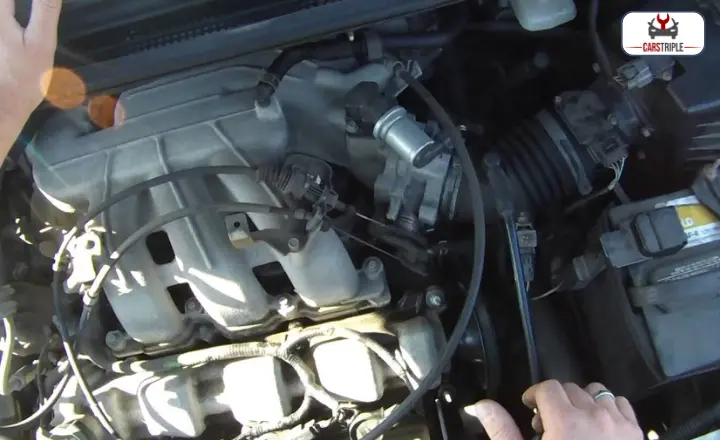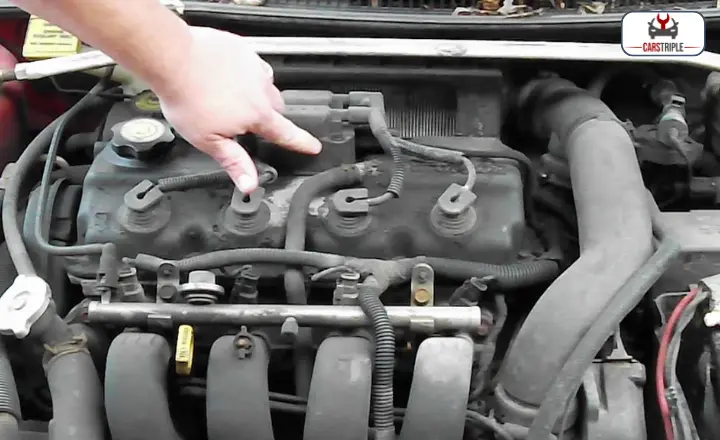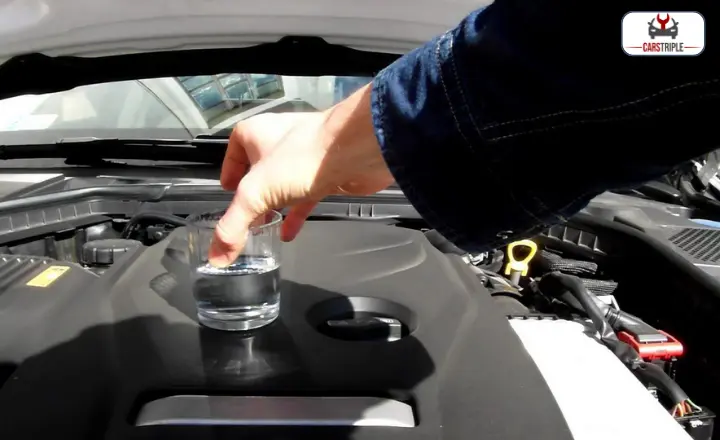Vehicle driving with a misfiring cylinder can be an alarming experience, as it often leads to poor engine performance and potential damage if left unresolved. A misfiring cylinder occurs when one of the cylinders in an internal combustion engine fails to ignite fuel correctly.
This results in reduced power, rough idling, and even stalling. While it may be tempting to ignore this issue or delay repairs, understanding the causes, consequences, and necessary steps for rectification is crucial to ensure vehicle safety and longevity.
In this article, we will delve is it bad to drive with a misfire, shedding light on the potential dangers of such circumstances while providing insights on how to address them effectively.
Driving With A Misfiring Cylinder: Causes
The cylinder plays a critical role in the combustion process, allowing fuel and air to mix and ignite, generating power for the engine. It can experience failure over time, like any other mechanical part.

Overheating
An engine running at high temperatures for extended periods or lacking sufficient coolant levels puts excessive strain on the cylinder walls and piston rings. This heat stress can lead to warping or cracking of the cylinder, resulting in decreased performance or complete failure.
Faulty spark plug
The spark plug plays a crucial role in igniting the air-fuel mixture inside the cylinder, initiating the combustion process that powers the engine. When a spark plug becomes worn out or damaged, it can lead to misfiring or weak sparks. Incomplete combustion occurs, leading to reduced power output and poor fuel efficiency.
A spark plug may fail due to carbon deposits. Over time, carbon buildup can accumulate on the spark plug electrodes, inhibiting its ability to produce a strong and consistent spark.
This can be caused by inefficient fuel burning or low-quality gasoline. If oil leaks into the combustion chamber, it can contaminate the spark plugs and cause them to malfunction.
Bad ignition coil
The ignition coil plays a crucial role in combustion. It converts low voltage from the battery into high voltage needed to ignite the fuel and air mixture inside the cylinders. If the ignition coil starts to malfunction, it can lead to problems resulting in cylinder failure and potential issues with a bad ignition coil misfiring.
When an ignition coil fails, it may not be able to provide enough voltage for proper combustion. There may be incomplete burning of fuel and air mixture in one or more cylinders, leading to misfires. These misfires can cause rough idle, hesitation during acceleration, and poor overall engine performance.
What happens when a cylinder fails?
When a cylinder fails, it can lead to catastrophic consequences in various industries and applications. In the automotive industry, a failed cylinder can cause engine misfires, loss of power, and even complete engine failure. This poses a significant safety risk and results in costly vehicle-owner repairs.
The most noticeable effect of a failing cylinder is a loss of engine power. In a 4-cylinder engine, when one cylinder fails, the entire system will experience a reduction in power by approximately 25 percent. This decrease in power output can make it difficult for the vehicle to accelerate or maintain high speeds.

A failing cylinder can lead to rough idling and uneven engine operation. The imbalance caused by the malfunctioning cylinder affects the smooth rotation of the crankshaft, resulting in vibrations that are felt throughout the vehicle.
This irregularity often manifests as shaky or unstable idling when the car is stationary or at low speeds. Drivers may notice increased noise and vibration due to the compromised combustion process inside the affected cylinder.
How long can you run a car with a failed cylinder?
Running a car with a failed cylinder is not recommended, as it can lead to severe consequences. A failed cylinder means that one of the engine’s cylinders is not working correctly, causing an imbalance in the power output. This imbalance can result in reduced acceleration, poor fuel efficiency, and decreased vehicle performance.
You may notice that your car struggles to reach high speeds or experiences difficulty climbing steep hills. It can cause excessive vibration and shaking of the vehicle, making it difficult to maintain control.
Fuel efficiency will be severely affected since the engine will need to work harder and burn more fuel to compensate for the loss of power from the failed cylinder.
With this, a faulty cylinder can cause further damage to other engine components. The unburned fuel from the malfunctioning cylinder can contaminate the catalytic converter and exhaust system, leading to costly repairs or replacements.
Is it wrong to drive with an ignition failure?
When faced with an unexpected ignition failure, many drivers are torn between their desire to get back on the road and safety concerns. It can occur for various reasons, such as faulty spark plugs, a malfunctioning ignition coil, or even issues with the fuel delivery system.

Driving with this can be risky, especially in heavy traffic or on a busy highway. When the engine shuts down unexpectedly, it could lead to losing control over your vehicle and potentially causing accidents.
It may cause further damage to your car’s engine and other components. Ignoring such issues could result in costly repairs down the line. It’s vital to assess the severity of the problem before making any decisions.
Driving With A Misfiring Cylinder: Fixes
A car cylinder misfire can be frustrating and potentially dangerous for any vehicle owner. A misfire occurs when one or more cylinders fail to ignite the fuel mixture properly, resulting in a loss of power, rough idling, and even engine damage if left untreated. Several potential fixes for this problem can help restore your car’s performance and ensure its longevity.
Look for a flashing check engine light.
A flashing check engine light should always be addressed as it indicates that your engine’s combustion process needs to fix something. It means that unburned fuel has entered the exhaust system, which can potentially damage the catalytic converter over time. To address this issue, you will need a diagnostic tool to retrieve the trouble codes stored in your car’s computer system.
Scan the engine’s error codes.
Modern vehicles have an onboard diagnostic system (OBD) that constantly monitors engine performance parameters. When a misfire occurs, it triggers a code that is logged in the OBD system. By connecting a scan tool to the vehicle’s OBD port, mechanics can retrieve these error codes and gain valuable insights into what might be causing the misfire.
Scanning the engine’s error codes helps identify which specific cylinder is experiencing the misfire and provides information about other potential issues contributing to this problem. For example, an error code related to a faulty fuel injector or ignition coil may indicate why one cylinder is not firing correctly.
Feel for a strong vibration from the engine bay.
It’s essential to identify which specific cylinder or cylinders are misfiring. This can be done using an OBD-II scanner that reads the diagnostic trouble codes (DTCs) stored in your car’s onboard computer. Once you’ve pinpointed the problematic cylinder(s), you can proceed with troubleshooting and repairs.

Check to see if your fuel mileage is getting worse.
If you’ve noticed that your fuel mileage is going downhill and you’re experiencing a rough ride, there’s a good chance your engine suffers from a cylinder misfire. A cylinder misfire occurs when one or more cylinders in your engine fail to ignite the fuel mixture properly, leading to poor performance. Ignoring this issue can lead to expensive repairs.
What is the cost of repairing a cylinder misfire?
If the culprit behind the misfire is worn-out spark plugs, then the cost for repair can range from as low as $10 to around $100. It is responsible for igniting the air-fuel mixture in each cylinder. These plugs can become dirty or worn out, leading to a weak or no spark.
If they are related to ignition components such as ignition coils, the costs can range anywhere from $24 to $360. This broad price range is due to various factors, such as the brand and quality of the parts needed for replacement, labour costs charged by mechanics, and whether you choose to do the repairs yourself or take your vehicle to a professional.
Another cause of a cylinder misfire is faulty fuel injectors. These critical parts deliver the right amount of fuel into each cylinder at precisely the right time. Replacing them can be expensive, ranging between $1600 and $1800.
The high cost of replacing fuel injectors stems from their intricate design and essential role in engine performance. Fuel injectors are precision-engineered components that require meticulous craftsmanship and precise calibration to function optimally.
Conclusion
Driving with a misfiring cylinder is not only inconvenient but potentially dangerous. Ignoring the issue can lead to further damage to the engine and decreased fuel efficiency. It is essential to address any engine problems promptly to avoid costly repairs down the line.
If you suspect your vehicle has a misfiring cylinder, it is recommended to have it inspected and repaired by a professional mechanic as soon as possible. Taking care of your car’s maintenance needs will ensure its longevity and keep you safe.
FAQ’s
How does a car cylinder misfiring start?
The possibility of cylinder misfiring is a fuel delivery issue. A problem with the fuel injectors or pump can result in insufficient fuel reaching the cylinder, causing it to misfire.
How will you check a misfiring problem?
You can start by scanning the vehicle’s onboard diagnostic system (OBD-II) for trouble codes. These codes will provide valuable information about which specific cylinder or component is causing the misfire.

